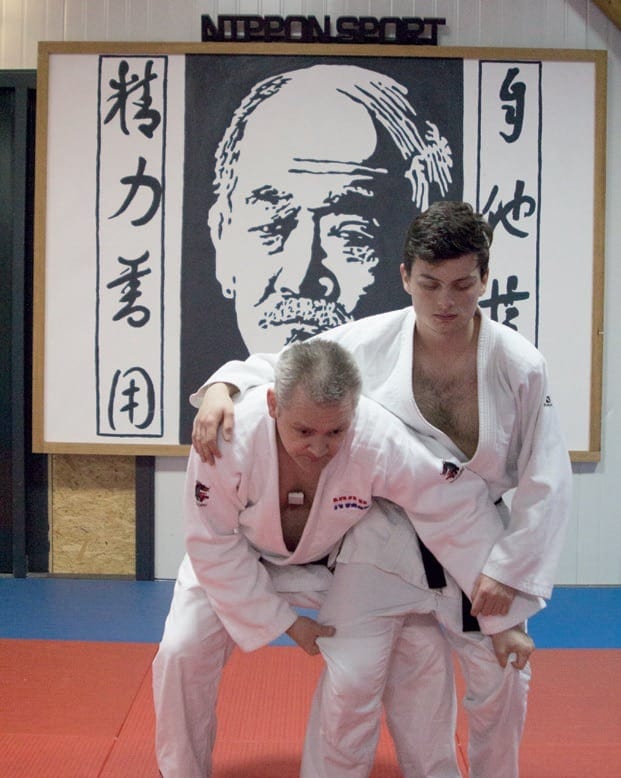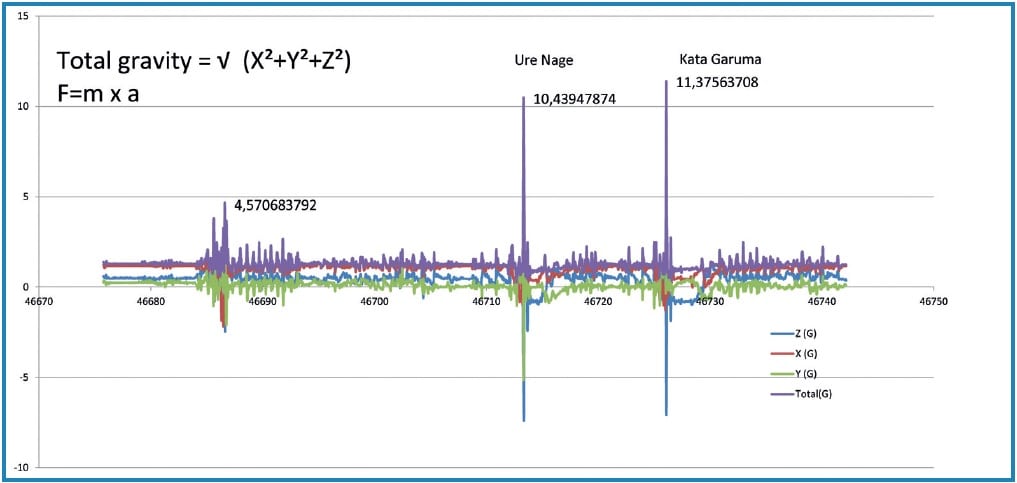With the advancement of technology, sports scientists and coaches are finding new ways to study and improve their athletes’ performance with the use of innovative, smart technology. The importance of understanding the impact of falls in Judo was recently addressed in an article titled “Help, I’m Falling” published in a budo sport magazine in the Netherlands, called NVJJL budomagazine.
Judo is best known for its spectacular throwing techniques, which may be a surprise to many that it is translated as the “gentle way”. It is a unique sport and martial arts in the way that it incorporates a scientific approach to the methods of falling, known as ukemi. The impact of falls can be studied using accelerometers.
Fall impact
As described by the author, Mark Donners, acceleration (change in speed) of falling is typical of falls produced by Judo throws. During a throw, an amount of kinetic energy is converted into power contributed by falling speed.

Example:
Armed with an accelerometer from Maastricht Instruments B.V., Mark Donners, an experienced Judoka, asked his training partner to throw him a few times. With the accompanying software, the gravitational forces at the moment of impact were determined. The gravitational forces can be interpreted in this case as a multiplication factor for his own weight. For example with reference to the graph on the right, it can be deduced that during Ure Nage (Rear Throw), he had to deal with 10x his own weight.
With this knowledge, the magnitude of this force can be determined. This is dependent on 3 factors: Mark Donner’s weight, the speed with which he hits the ground and the impact (absorption) applied over a time period. The harder the landing surface, the shorter this time will be. Assuming that Mark Donners lands on a Judo mat with a diameter of 0.5 cm and that is applied over 0.1 seconds, he has to deal with a force of 4320N: This is equal to 432kg. That is more than 5 times his weight! If Mark Donners were to fall on a harder surface, that time of landing (force absorption) becomes shorter, for example 0.01 seconds, then the magnitude of the force is 43200N. This corresponds to 4320 Kg! That is heavier than many cars. This shows the importance of a good Judo mat to reduce the impact forces that are encounter during the fall.
Throw techniques
There are other multiple applications for studying acceleration in Judo, such as to analyse throwing techniques. The magnitude of that force depends on a number of factors, of which speed and weight of the judoka are the most important. While the weight of the judoka is unchanged during the training, we can, however, influence the speed and the height of the fall. The speed and height of the fall can be determined by measuring (vertical (upward) velocity and the horizontal (sideways) velocity) using accelerometers. Hence by studying how a throw is executed in terms of acceleration, throwing techniques can be improved.
Acceleration is a fundamental part of many sports. There are numerous methods and technologies for analysing movement in sports and an accelerometer is one of the tools available.
Our experts at Maastricht Instuments can share more information about accelerometer technology and its applications, contact us!
Images and content in this article are adapted from the article “Help, I’m Falling”, with permission from the author, Mark Donners, and its original source: NVJJL budomagazine. Featured photo is taken from the book “Fighting Judo” by Katsuhiko Kashiwazaki, 1985.
Download the original article “Help, I’m Falling” (in Dutch) here.


